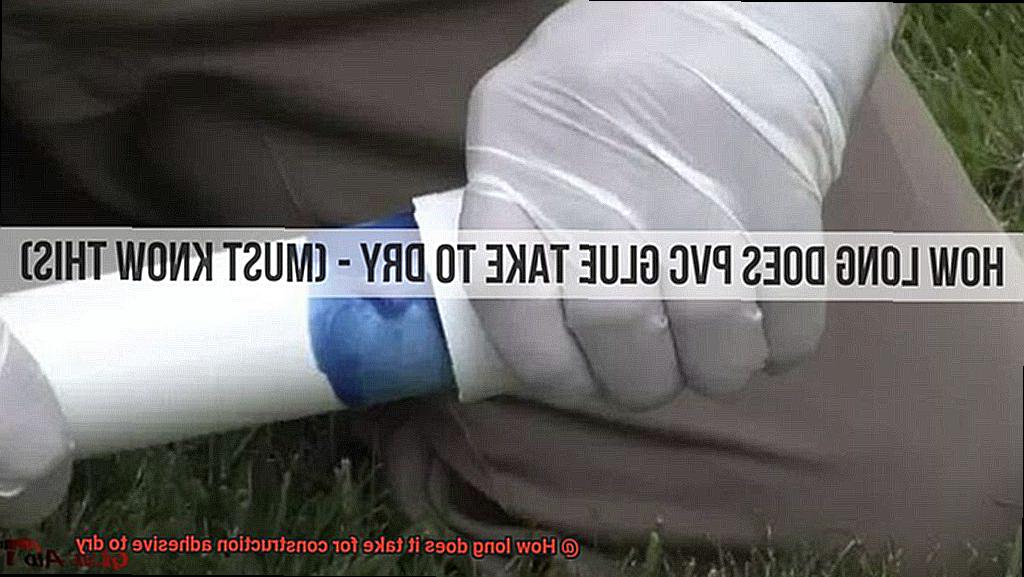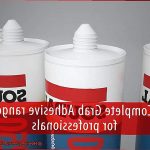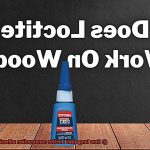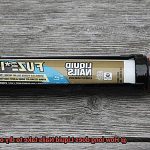Welcome to our blog post where we explore the captivating realm of construction adhesive drying time.
Whether you’re a seasoned DIY enthusiast or a first-time handyman, knowing how long it takes for this sticky substance to dry is crucial for project success. We’ve all experienced that eager anticipation, yearning for our project to be complete, only to find ourselves pondering the seemingly eternal wait for the construction adhesive to dry.
Fear not, my friend. We’ve got your back.
Contents
- 1 What is Construction Adhesive?
- 2 Factors Affecting Drying Time of Construction Adhesive
- 3 Average Drying Time for Construction Adhesive
- 4 Fast-Drying Construction Adhesives
- 5 Temperature and Humidity Considerations
- 6 Thickness of Application and Drying Time
- 7 Allowing Sufficient Drying Time
- 8 Manufacturer Instructions and Guidelines
- 9 Conclusion
In this all-encompassing guide, we’ll unravel the mysteries behind drying time and delve into factors that can influence it. Plus, we’ll reveal the typical drying times for various types of construction adhesives and even share some nifty tricks to speed up or slow down the process.
So, roll up those sleeves and prepare yourself for an enlightening journey into the world of construction adhesive drying time.
What is Construction Adhesive?
Construction adhesive, also referred to as construction glue or construction sealant, is a mighty tool that plays a pivotal role in the construction industry.
This versatile adhesive forms a strong and durable bond between various materials, making it an essential component for a wide range of applications. Understanding the factors that affect drying time and following proper usage guidelines are crucial for achieving optimal bonding and performance.
In this article, we will delve into the concept of construction adhesive, explore the factors influencing its drying time, and provide valuable tips for effective usage.
Factors Affecting Drying Time:
Type of Adhesive:
Construction adhesives come in different types, each with varying drying times. Some adhesives are formulated for quick bonding and may dry within minutes, while others require several hours or even days to fully dry and cure. It is essential to consult the manufacturer’s instructions to determine the drying time specific to the adhesive you are using.
Materials Being Bonded:
The nature of materials being bonded can significantly impact drying time. Porous materials like wood or concrete may absorb moisture from the adhesive, prolonging the drying process. On the other hand, non-porous materials such as metal or plastic may hinder solvent evaporation, consequently extending drying time.
Environmental Conditions:
The temperature and humidity levels in your work environment play a significant role in the drying time of construction adhesive. Generally, warmer temperatures and lower humidity levels promote faster drying, while colder temperatures and higher humidity can delay the process. Considering these environmental factors is crucial for ensuring optimal drying and bonding.
Tips for Using Construction Adhesive Effectively:
Follow Manufacturer’s Instructions:
Each construction adhesive product comes with specific guidelines regarding its application and drying time. To achieve the best results, it is imperative to read and adhere to these instructions meticulously. Failure to do so may compromise bond strength and overall adhesive performance.
Apply the Adhesive Correctly:
Proper application of construction adhesive is vital for efficient drying. Ensure a uniform and thin layer of adhesive is applied to the surface. Thick applications may take longer to dry and cure, potentially affecting bond strength. Utilize a caulking gun or putty knife to spread the adhesive evenly.
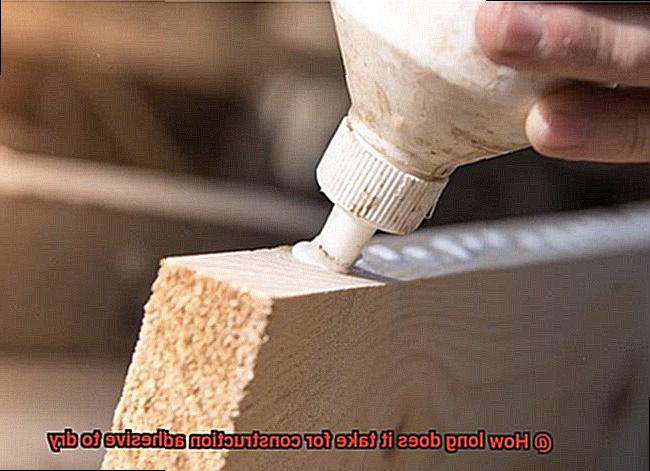
Allow Sufficient Drying Time:
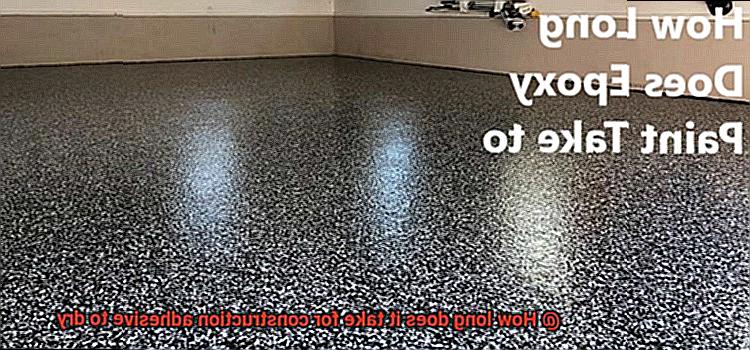
To achieve maximum bond strength, it is important to allow sufficient drying time before subjecting the bonded materials to stress or load-bearing conditions. Prematurely stressing or moving the materials can lead to adhesive failure. Refer to the manufacturer’s instructions for specific drying times.
Consider Environmental Factors:
Take into account the temperature and humidity conditions in your work environment. If possible, choose a day with favorable conditions for applying construction adhesive. If working in unfavorable conditions, consider using adhesives specifically designed for quick drying or adjust your work schedule accordingly.
Factors Affecting Drying Time of Construction Adhesive
Construction adhesive is the unsung hero of the construction world, creating strong bonds that stand the test of time. But have you ever wondered why some adhesives dry in a flash, while others seem to take forever? Let’s dive into the fascinating world of glue drying time and uncover the factors that influence it.
The Type of Construction Adhesive:
Different adhesives have varying drying times. Solvent-based adhesives dry faster than water-based ones due to rapid solvent evaporation. Knowing the specific adhesive type is crucial for understanding its drying characteristics.
Temperature and Humidity:
Temperature and humidity are pivotal in glue drying time. Higher temperatures accelerate drying, while lower temperatures slow it down. Additionally, high humidity levels prolong drying as moisture inhibits evaporation. Ventilation or dehumidifiers can aid drying in humid conditions.
Surface Material Matters:
Porous materials like wood or concrete absorb adhesive moisture, extending drying time. Non-porous surfaces such as metal or glass allow for quicker drying. However, non-porous surfaces often require preparation to optimize adhesion and drying time.
Thickness of Application:
Thicker adhesive layers take longer to dry as more material needs to cure. Following manufacturer instructions regarding recommended thickness ensures optimal drying.
Ventilation and Air Circulation:
Adequate airflow expedites drying. Opening windows, using fans, or creating a breeze enhances ventilation and evaporation, speeding up drying time.
Curing Time vs. Initial Drying Time:
Patience is key, as adhesive may be touch-dry but still require additional curing time to reach full strength and bonding capabilities. Following manufacturer guidelines ensures optimal results.
Average Drying Time for Construction Adhesive
Today, we embark on an enchanting journey to uncover the secrets behind this magical transformation. Join me as we explore the captivating realm where temperature, humidity, and other environmental conditions shape the destiny of your adhesive’s drying journey.
Factors Affecting Drying Time:
- Type of Adhesive: The type of construction adhesive used plays a significant role in its drying time. Polyurethane-based adhesives, known for their exceptional strength and flexibility, typically require 24 to 48 hours to fully cure. Epoxy-based adhesives, on the other hand, boast quick drying times, ranging from a mere 5 minutes to several hours, depending on the specific product. Acrylic-based adhesives fall in between, usually curing within 24 hours.
- Environmental Conditions: Ah, the whims of Mother Nature. Temperature and humidity levels can greatly impact how quickly your adhesive dries. Low temperatures and high humidity tend to extend drying time, while warm temperatures and low humidity can hasten the process. It’s crucial to refer to the manufacturer’s instructions for optimal environmental conditions during application.
- Surface Materials: The materials being bonded also influence drying time. Porous surfaces, such as wood or concrete, tend to absorb moisture from the adhesive, potentially prolonging drying time. Non-porous surfaces like metal or glass may require more time for curing since there is less moisture available for the chemical reaction.
- Mechanical Support: In certain cases, using clamps or other forms of mechanical support can aid in achieving a strong bond while the adhesive is drying. This is particularly useful when bonding heavy materials or when a quick bond is desired.
Patience is Key:
Patience is indeed a virtue in the realm of construction adhesive. Although the adhesive may appear dry to the touch within a relatively short time, full curing can take longer. To ensure the utmost strength and integrity of your bond, it is recommended to wait for the adhesive to fully cure before subjecting the bonded materials to any significant stress or load.
Conclusion:
As we conclude our captivating journey into the world of construction adhesive drying time, we have unraveled the secrets behind this mystical transformation. Temperature, humidity, surface materials, and the type of adhesive all influence how quickly your adhesive will solidify its bond. So next time you embark on a construction project, armed with this newfound knowledge, you can conquer any bonding challenge that comes your way. May your adhesives dry swiftly and your bonds remain unbreakable.
Fast-Drying Construction Adhesives
Look no further than the world of fast-drying construction adhesives. These remarkable concoctions are specially engineered to dry at lightning speed, turning your DIY dreams into reality.
So, what’s the secret behind their rapid drying? It all comes down to their chemical composition. Fast-drying adhesives contain solvents or volatile compounds that evaporate in a flash, turbocharging the drying process. No more wasting precious hours waiting for the adhesive to set – with fast-drying adhesives, you can hit the ground running and make the most of your hard work.
But that’s not all – not all fast-drying adhesives are created equal. Different types offer varying drying times, ranging from mere minutes to a few hours. Fast-drying adhesives fall on the shorter end of the spectrum, typically setting within 15 minutes to an hour. That’s faster than a speeding bullet compared to traditional adhesives.
Of course, like any magical potion, there are a few things to consider. While fast-drying adhesives are perfect for projects that demand quick bonding and shorter waiting times, they may not be suitable for all applications. Some projects require a longer open or working time, where slower-drying adhesives shine.
To achieve optimal results with fast-drying construction adhesives, it’s crucial to follow proper application techniques. Clean and dry surfaces are a must – any dust or debris can weaken the bond. Apply the adhesive evenly and avoid excess amounts that could impair the strength of the bond.
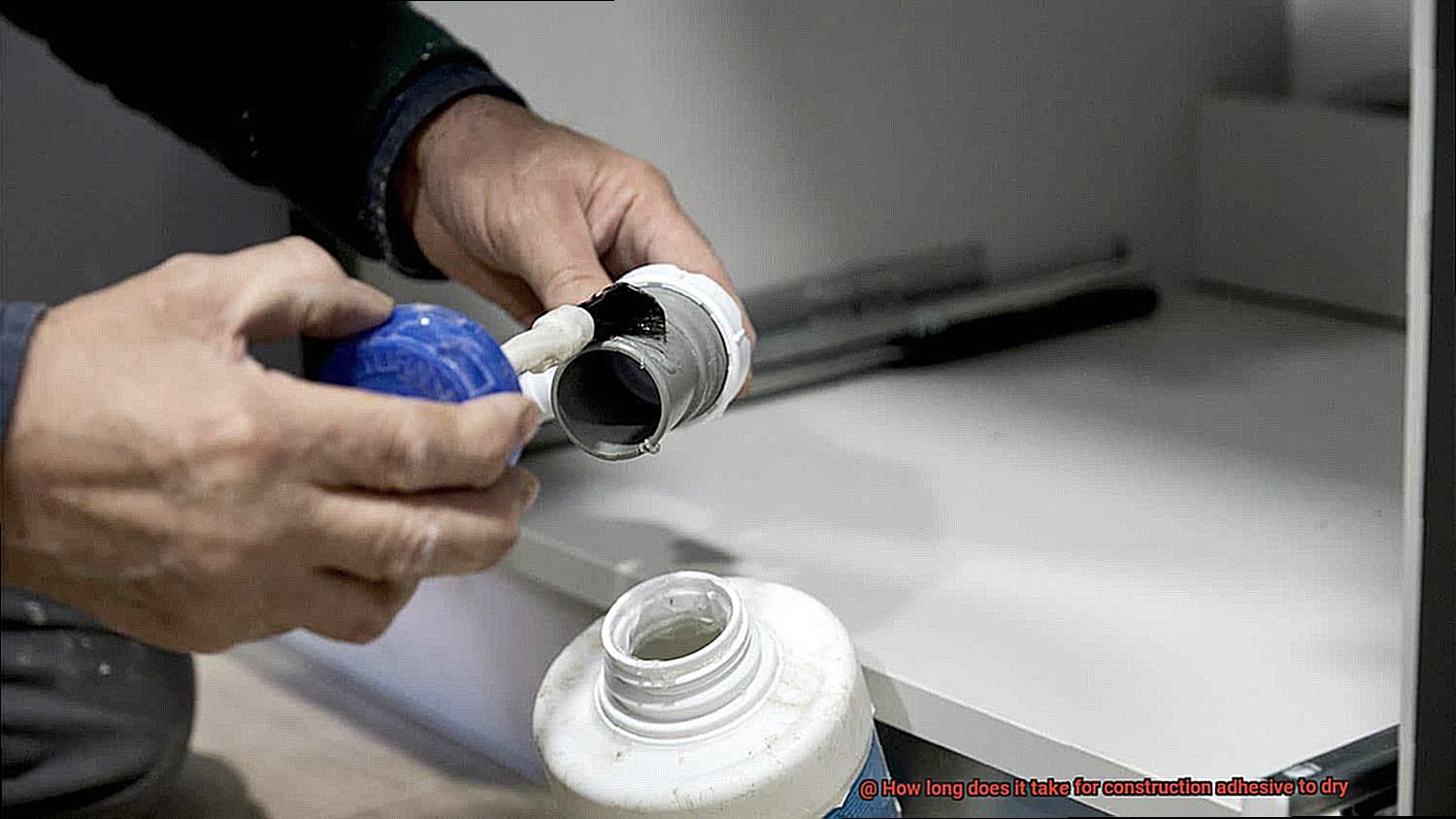
And remember this golden rule: even if the adhesive feels dry to the touch within the specified drying time, give it ample curing time to reach its full strength. Curing times vary depending on the adhesive type and manufacturer’s recommendations, so don’t be hasty – check the instructions for guidance.
Temperature and Humidity Considerations
When it comes to construction projects, choosing the right adhesive is crucial for ensuring a strong and durable bond between materials. But did you know that temperature and humidity can significantly affect the drying time of construction adhesive? These factors play a vital role in adhesive drying, and understanding their importance is key to achieving optimal results.
Temperature is a critical consideration when it comes to adhesive drying. Most construction adhesives have a recommended temperature range for optimal drying, and following these guidelines is essential. Higher temperatures accelerate the drying process, while lower temperatures slow it down. Extreme temperatures can even compromise the overall performance of the adhesive, making it crucial to work within the recommended range.
The specific drying time varies depending on the type of construction adhesive used. Some adhesives may dry within a few hours, while others require several days to fully cure. It’s vital to check the manufacturer’s instructions for the recommended drying time of your specific adhesive to ensure proper bonding.
In addition to temperature, humidity levels in the environment also play a significant role in adhesive drying. High humidity can extend the drying time as moisture in the air hampers the evaporation of solvents or water in the adhesive. To achieve optimal results, it’s crucial to follow the manufacturer’s instructions for recommended humidity levels during application and drying. If working in areas with high humidity, using dehumidifiers or fans can help expedite the drying process by reducing moisture in the air.
On the other hand, extremely dry environments might require increasing humidity levels to prevent rapid evaporation and ensure proper curing of the adhesive. Accurate monitoring of humidity levels is essential, which is why professionals often use moisture meters or hygrometers during adhesive application and drying.
It’s important to note that temperature and humidity considerations apply not only during application but also during the entire drying period. Changes in temperature and humidity can affect the final strength and durability of the bond. To ensure the best results, it’s advisable to consult with the adhesive manufacturer or seek guidance from professionals experienced in construction adhesive usage when working in extreme temperature or humidity conditions.
Thickness of Application and Drying Time
The thickness of application and drying time of construction adhesive are closely intertwined. Applying the adhesive too thickly can result in longer drying times, as there is more material that needs to evaporate or cure. Conversely, applying it too thinly may not provide sufficient bonding strength. Therefore, it is crucial to follow the manufacturer’s instructions regarding the recommended thickness for optimal drying and bonding results.
Environmental conditions also play a significant role in the drying time of construction adhesive. Higher temperatures generally promote faster drying times, while lower temperatures can slow down the process. Similarly, lower humidity levels facilitate quicker drying, while higher humidity levels can prolong the drying time. Adequate airflow is crucial for efficient drying, so ensuring good air circulation in the area where adhesive is applied is essential.
For instance, imagine you are working on a construction project in a hot and dry environment. The high temperature and low humidity levels will likely cause the adhesive to dry quickly. However, if you are working in a cold and humid environment, the drying process may be significantly slower.
It is important to allow sufficient curing time before subjecting the bonded materials to stress or load-bearing activities. Even if the adhesive feels dry to the touch, it may not have fully cured internally. Waiting for the recommended curing time ensures optimal bonding strength and durability.
Different types of construction adhesives may have varying drying times and curing mechanisms. Some adhesives rely on evaporation of solvents to dry, while others cure through a chemical reaction or moisture absorption. Understanding the specific characteristics of the adhesive being used is essential for achieving the desired results.
Allowing Sufficient Drying Time
Today, we embark on an exciting journey into the world of construction adhesive and discover why allowing ample drying time is absolutely essential for creating a bond that is strong and enduring. Get ready to dive into the sticky business of construction adhesive.
Construction adhesive is like the superhero of the glue world, capable of bonding a wide array of materials together, from wood and metal to plastic and more. However, this superhero needs time to work its magic.
The drying time of construction adhesive depends on several factors. First and foremost, it’s crucial to consider the type of adhesive being used. Different adhesives have different drying times, so it’s important to heed the recommendations of the manufacturer. After all, they are the glue gurus.
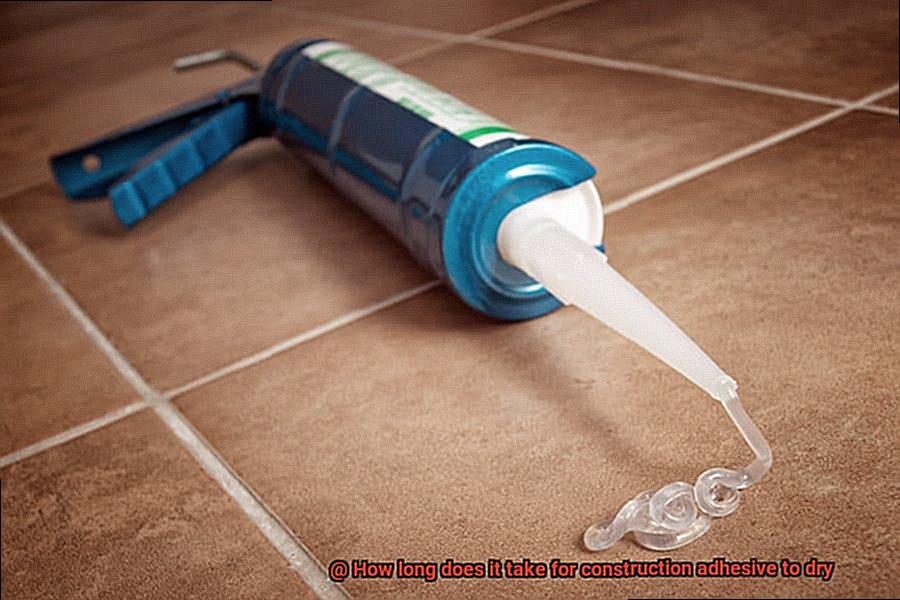
Temperature and humidity also play a significant role in drying time. Just like Goldilocks searching for the perfect bowl of porridge, you need to find that sweet spot. If the weather is scorching hot, the adhesive will dry faster than you can say “stick it.” Conversely, if it’s chilly and humid, well, let’s just say you might be waiting a while.
But wait, there’s more. Adequate airflow is crucial for efficient drying. Think of it as giving your glue a breath of fresh air. Good circulation helps remove moisture from the adhesive, allowing it to dry faster and more effectively. So crack open a window or turn on a fan and let that air flow.
Now, here’s where things get really interesting – curing time. Even if the adhesive feels dry to the touch, it may not have fully cured internally. It needs time to cool down and set properly, just like a freshly baked cake. Rushing this step would be a grave mistake. Waiting for the recommended curing time ensures that your bond will be strong enough to withstand whatever comes its way.
But hold up, my glue-loving friends. Not all adhesives are created equal. Some rely on solvents evaporating to dry out, while others go through a chemical reaction or absorb moisture to cure. So make sure you know what kind of adhesive you’re working with to get the best results.
Manufacturer Instructions and Guidelines
If you’ve ever pondered the significance of adhering to manufacturer instructions and guidelines when working with glue, allow us to enlighten you. In this enlightening article, we will delve into how environmental conditions, application thickness, and the materials being bonded can significantly influence the drying time of construction adhesive. So put on your hard hat and let’s plunge into this fascinating subject.
Environmental Conditions:
Similar to humans, construction adhesives have their own climatic preferences. Temperature and humidity play a momentous role in determining drying time. Some adhesives thrive in warm and dry conditions, while others necessitate cooler temperatures or higher humidity levels for proper curing.
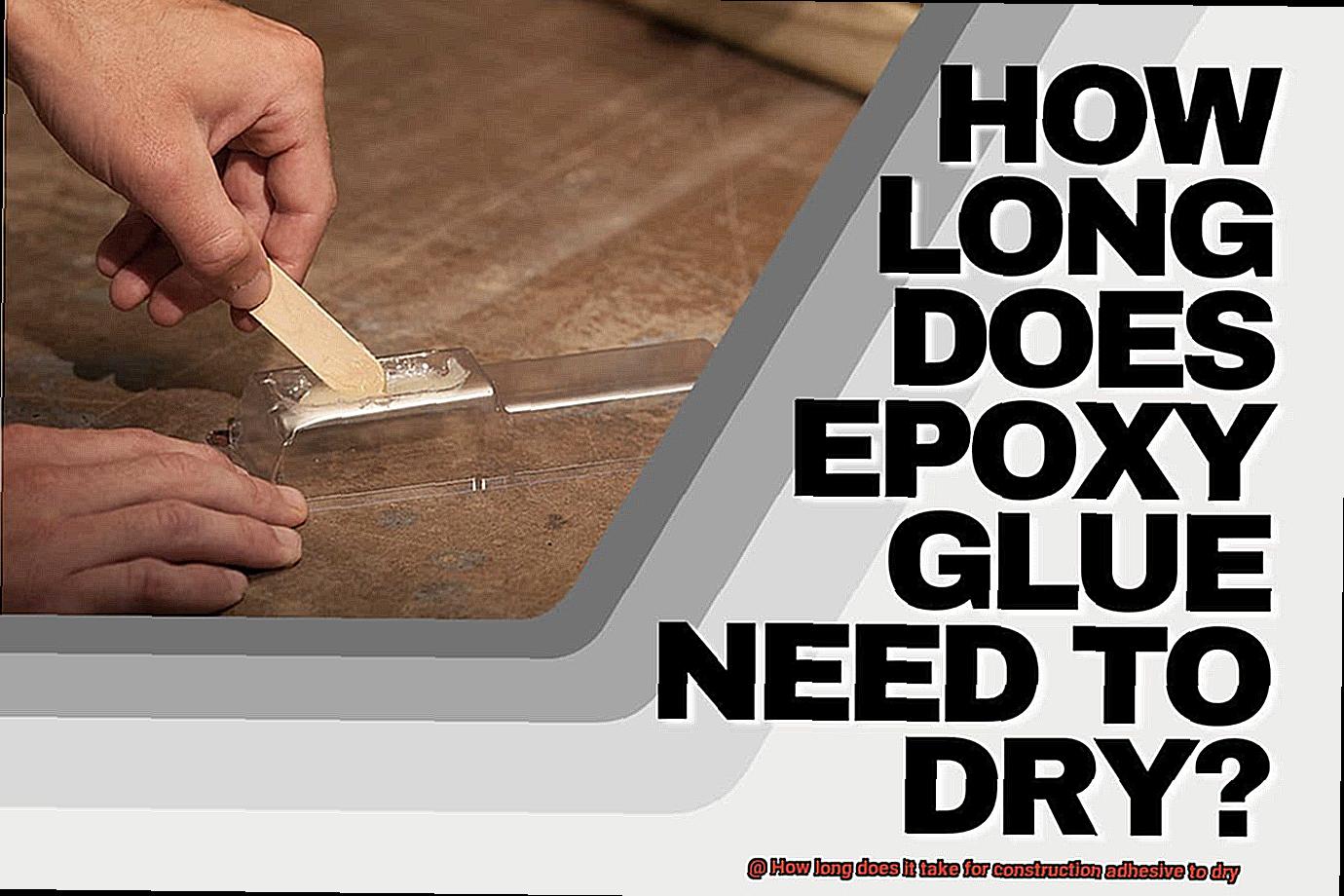
To guarantee optimal drying, always consult the manufacturer’s instructions for recommended temperature and humidity ranges.
Application Thickness:
When it comes to applying construction adhesive, thickness is paramount. A thick layer can elongate drying time as the adhesive requires more time to fully cure. Conversely, a thin layer may result in weak bonding strength.
Remember to adhere to the manufacturer’s guidelines regarding application thickness to attain the desired bond strength within the recommended drying time.
Materials Being Bonded:
Different materials possess distinct properties that can impact adhesive drying time. Porous surfaces or materials with high moisture content may require additional drying time for the adhesive to adequately cure and establish a robust bond.
Manufacturers often provide specific instructions for bonding different materials, meticulously considering their unique characteristics. Always consult these guidelines to ensure optimal bonding strength and durability.
WSoaX4kgMeg” >
Conclusion
Construction adhesive is a vital component in many building projects, providing strong and durable bonds. But how long does it take for this adhesive to dry? Well, the drying time can vary depending on different factors such as temperature, humidity, and the type of adhesive used.
On average, construction adhesive typically takes around 24 hours to fully dry and cure. However, it’s important to note that this is just an estimate and the actual drying time may vary. In some cases, it may take longer for the adhesive to dry completely.
The temperature plays a significant role in the drying process. Higher temperatures generally result in faster drying times, while lower temperatures can slow down the process. Additionally, humidity levels can also affect the drying time. High humidity levels can prolong the drying process as moisture in the air hinders evaporation.
The type of construction adhesive used also impacts drying time. Different adhesives have varying formulations and properties that influence their curing process. Some adhesives may have quick-drying capabilities, allowing them to reach full strength within a few hours. Others may require more time to fully dry and cure.
To ensure optimal results, it’s essential to follow the manufacturer’s instructions regarding application and drying times. These guidelines are specifically designed for each adhesive product and provide valuable information on how long you should wait before subjecting your project to stress or load-bearing activities.
In conclusion, while construction adhesive generally takes around 24 hours to dry, several factors can influence this timeframe. Temperature, humidity levels, and the specific type of adhesive all play a role in determining how long it will take for the adhesive to fully cure.

